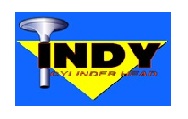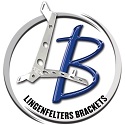Victory Nostalgia Super Stock Rules
(Updated 10-31-2025)
THE BELOW ARE THE RULES IN PRINT. ANYTHING NOT SPECIFICALLY LISTED IS
PROHIBITED UNLESS APPROVED BY THE SERIES RULES COMMITTEE.
Class Description
Nostalgia Super Stock is an index style foot brake only class for the year models, body styles,
and engine combinations, which accurately represent those cars, which raced in the Super
Stock classes of the ‘60’s. Certain exceptions in the authenticity of those cars will be
allowed. Among those exceptions, but not limited to, are factors concerning safety, equality
in performance, availability, and durability.
Eligibility will be based on a visual inspection by Series Rules Committee members.
No modifications, which alter the car from factory stock, are permitted unless they are
specifically allowed in these rules. All cars and drivers must meet track sanctioning body
safety rules for their ET range. Competition rules are voted on by Victory NSS Association members,
as necessary. For any questions or clarifications, please contact the Series Director. The decisions of
Series Director are final.
Sandbagging, excessive braking near the finish line, or excessive mph for a given ET is subject to
result in a disqualification.
Nostalgia Super Stock is an all run field and will compete on an NHRA Pro type ladder. Racers will
run on a .500 Full Tree with Autostart On and will be handicapped according to index. The class will
qualify by elapsed time closest to index, be paired according to qualifying positions, and then
advance accordingly in eliminations.
Index must be declared prior to the qualifying pass and can’t be changed. It is always the driver’s
responsibility to verify that the posted index is correct.
In QUALIFYING, if a racer fully stages on an incorrect index, the posted index is accepted for that
pass; therefore, that pass will be based on the posted/accepted index.
In ELIMINATIONS, if a racer fully stages on an incorrect index, the posted index is accepted for
that pass; therefore, that pass will be based on the posted/accepted index and the WIN LIGHT
will be the deciding factor of that race.
Indexes for Victory NSS are at .25 second intervals starting at 9.00 and ending at 13.00, for ¼ mile.
For 1/8 mile indexes will utilize a 1.56 conversion factor.
ALL cars running an 11.00 or faster index MUST HAVE an engine diaper or approved belly pan
system and HIGHLY RECOMMENDED ON ALL CARS.
Eligible Year Models and Body Styles:
The following is a list of cars/engines, which are allowed to compete in Victory NSS:
AMC AMX: 1968-1969; 390
Chevrolet Full Bodied: 1959-67; 348 & 409’s, 396-454
Chevrolet Chevelle: 1964-1967; 396-454
Pontiac Full Bodied: 1959-67; 389-455
Tempest/GTO: 1962-67; 389-455
Ford Full Bodied: 1959-67; 390-428, 460 (FE and 385 Series)
Ford Thunderbolt: 1964; 390-427, 460 (FE and 385 Series)
Fairlane/Comet/Cyclone/Falcon: 1963-67; 390-428, 460 (FE and 385 Series)
Dodge/Plymouth Full Bodied: 1959-67; 383-440 B/RB
Dodge/Plymouth Full Bodied: 1964-67; Hemi
Buick Full Bodied; 1960-67; 401-455
Skylark GS: 1964-67; 400-401-455
Oldsmobile Full Bodied: 1960-67; 394-400-455
Cutlass/442: 1964-67; 400-455
Dart/Barracuda: 1967-69; 383-440 B/RB, 426 Hemi
INTAKE
All cars must be big block with multi-carb combinations. No sheet metal intakes. Manifolds
restricted to factory or commercially available cast units. Top of manifold lid may be modified
and fabricated as necessary to accommodate carburetor placement. All cars must run gasoline
fuel [no methanol]. No power-adders allowed [NOS, Supercharger, Turbo-Charger etc.] Tunnel
ram must still meet hood scoop requirements.
The following carburetor combinations are allowed, regardless of year/make/model of entry:
Buick 400-455: inline or cross-ram 2x4 AFB
Chevy 348-409: inline 2x4 or cross-ram, with Carters, AFB’s, Rochester, domi, or Holley Inline 3x2
with Rochester
Chevy 396-454: inline or cross-ram 2x4 AFB or Holley, inline 3x2 Holley
Chrysler Hemi: inline 2x4 with Carters, AFB’s, Edelbrocks, Holleys, or cross-ram 2x4 intake with
Holleys
Chrysler Wedge: inline or cross-ram 2x4 with Carters, AFB’s or Edelbrocks
Ford: inline or cross-ram 2x4 intakes, inline 3x2, with Holleys
Pontiac: inline or cross-ram 2x4 intakes with Carters, AFB’s, Edelbrocks, or Holleys; or inline 3x2 with
Rochester
AMX 390: cross-ram 2x4 bbl with Holleys
Olds 400-455: inline or cross-ram 2x4 intakes with Carters, AFB’s, Edelbrocks, or Holleys; or inline
3x2 with Rochester
Positioning of carburetors from factory mounting not a tech item. Carburetors may be positioned
facing forwards, backwards, or side mounted.
Choke horn, choke plate, choke shaft, choke linkage, and choke mechanism may be removed.
No dominators or Edelbrock 4150 Holley style carbs allowed.
IGNITION
Any battery powered ignition system permitted unless specified in this section. Programmable digital
ignition boxes prohibited. The use of any programmable multipoint rev limiter or rate of acceleration,
rpm limiter, either by themselves or integrated into the ignition system are prohibited. Traction control
prohibited. NO laptops permitted in car at any time.
NO computer port, connection, readout, or download connection allowed for anything other than
tachometer playback.
DRIVER MUST PERFORM ALL FUNCTIONS OF CAR
Bracket racing aids such as optical sensors, delay boxes, stutter boxes, two-steps [except with clutch
operated cars], and throttle stops prohibited. The application or use of any device, mechanical or
electronic, that permits the driver to ascertain the position of their vehicle in relation to the starting
line is prohibited. Onboard diagnostic and data recorders used to monitor and record parameters
such as a driveshaft speed, acceleration, chassis strain, suspension travel, etc. are prohibited. Wide
band oxygen sensors permitted. ‘Playback” tachometers permitted. Laptops prohibited in vehicle.
MANUAL TRANSMISSION
OEM or aftermarket transmissions with a maximum of 4 forward speeds permitted. Clutchless
transmissions prohibited. Planetary transmissions prohibited. All shifts must be made manually
without the aid of electric, hydraulic or pneumatic devices. Starting line rev limiters permitted. Torque
converter not permitted with this type transmission.
AUTOMATIC TRANSMISSIONS
Automatic transmissions originally produced by any American automobile manufacturer or replicas of
an automatic transmission produced by any American automobile manufacturer (EX.Deadenbear PG
transmission) mandatory. Lock-up transmissions/torque converters permitted. Transmission to engine
adapters permitted. All shifts must be made manually without the aid of electric or pneumatic devices.
A competitor may elect to leave the trans-brake solenoid installed in the transmission; however, it
may not be used in qualifying or competition runs. Starting line rev limiters prohibited. Clutch
prohibited with this type of transmission.
In addition to normal track required transmission shield requirements, all 727 Mopar transmission
equipped cars running 12.00 or faster must have an approved transmission shield or blanket. (All
Victory NSS cars, regardless of make or index are highly encouraged to run a shield or blanket for
safety).
HOOD/SCOOP
Hood/scoops limited to OEM equipment or period style. Hood/scoop may be no higher than 5 inches.
Pro stock-style scoops prohibited. The entire induction system must be completely covered by hood
or scoop, which must be part of the vehicle hood.
All cars must retain factory body lines and must retain all body parts, including bumpers [lite-weight
replacement pieces allowed].
Interiors must have factory dash frame [aftermarket gauges accepted], full carpet, headliner, door
panels [no aluminum panels], 2 front seats [back seat optional]. Interior must be fully upholstered, if
back seat is deleted, carpet or upholstered panels shall cover the area.
Cars must retain the appearance and heritage of the 60’s era. All participants must adhere to the
spirit of the Victory NSS Class. Racers and crew must act in a professional manner and obey all track
and series officials. Series Director may disqualify any car or racer that does not adhere to the rules
and spirit of this class. Any new participant or anyone making changes to their car are encouraged to
consult the Series Director prior to event to prevent any misunderstandings or issues at the track. Any
“Grey” areas or points not covered in these rules are at the discretion of the Series Director/Rules
Committee. The decisions of Series Director are final.
Participants must be a Victory NSS Association member to race at a Victory NSS Points Race. Yearly
dues are determined annually. In addition to yearly dues, there will be a track entry fee per race.
Open to 1959-69 period-correct super stock cars with multiple carburetion and series-approved body
and big block engine combinations as listed.
Cars must have complete interiors (back seat optional)
Period-correct hood scoops or flat hood
Maximum rear tire width of 10.5W
No sheet metal intakes allowed
No electronics
No trans brakes use allowed during any launch.
Two-steps allowed with manual transmission only
OEM style steering mandatory, OEM or aftermarket steering in stock location mandatory.
SUSPENSION
Front suspension – Stock front suspension as factory designed required. Aftermarket direct
replacement suspension components including tubular A-arms permitted. However, overall design
and function as factory produced must be retained.
Rear Suspension: Rear suspension of ladder bar, three/four link, or stock rear suspensions
permitted.
WHEELIE BARS
Wheelie bars must not extend behind rear bumper.
CHASSIS
All vehicles must have a chassis that meets the guidelines set by SFI for their respective speed and
ET. A valid NHRA serialized sticker is mandatory for cars running 9.99 (6.39 1/8 mile) or quicker or
135 MPH or faster at a NHRA member track.
Stock frame required but may be strengthened with the addition of braces and “notched” or moved
inboard for rear tire and wheel tub clearance.
Full tube chassis prohibited.
Any racer participating in a Victory NSS Series event may not compete in the same car in a non-NSS
class at that event. However, the driver may drive a different car in a non-NSS class.
The decision of the race director is final.
Victory participants must meet all track sanctioning body safety requirements for their ET at all points
races, no matter the venue.
POINTS SYSTEM
Points are awarded to the driver.
Participants receive 20 points for passing tech at a Victory NSS Points Event.
10 points will be awarded to participants for each round of eliminations that they stage the car and
break the stage beam under power.
During eliminations, if all eligible racers can’t complete the current round due to weather or other
factors outside of the directors’ control, TEN (10) points will be awarded to all participants in that
round.
NOTE – For this situation only, the current rule stating “10 points will be awarded to participants for
each round of eliminations that they stage the car and break the stage beam under power” does not
apply.
Event winner will receive 12 bonus points.
Points will be awarded for qualifying at each event as follow:
#1 Qualifier [10 points]
#2 Qualifier [9 points]
#3 Qualifier [8 points]
#4 Qualifier [7 points]
#5 Qualifier [6 points]
#6 Qualifier [5 points]
#7 Qualifier [4 points]
#8 Qualifier [3 points]
#9 Qualifier [2 points]
#10 Qualifier [1 point].
In case of a tie at end of season, position will be decided by position in eliminations at the final points
event.
If this is not decisive, position will be decided by qualifying position at the final points event.
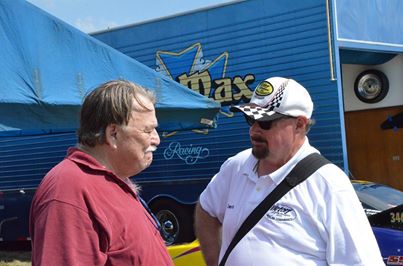
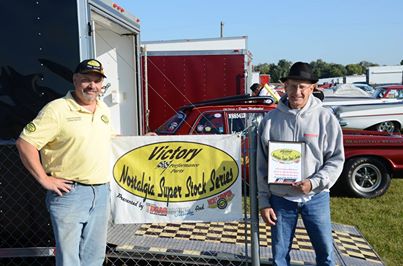
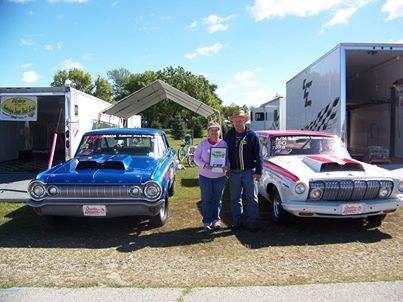
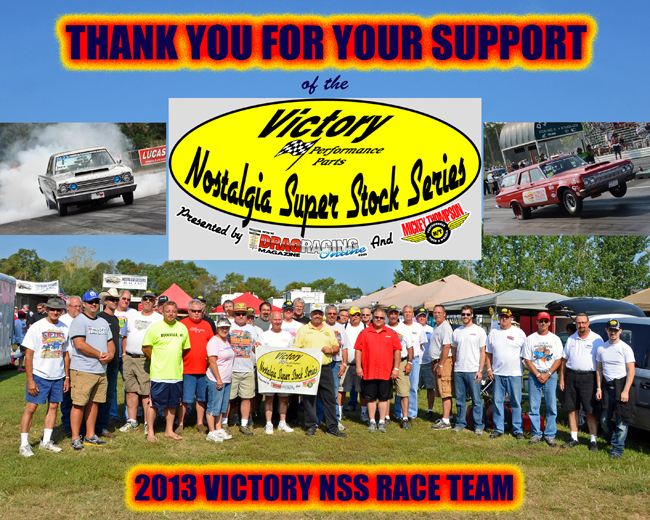
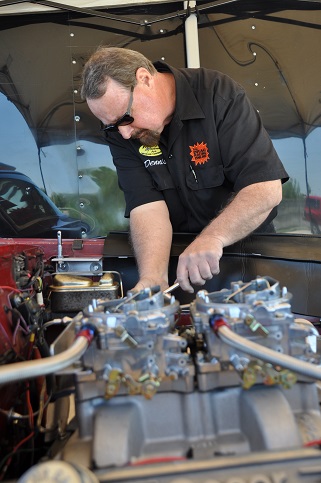
jeffdennis.jpg
tomHoffman.jpg
cnr.jpg
2013group.jpg
dm1.jpg



